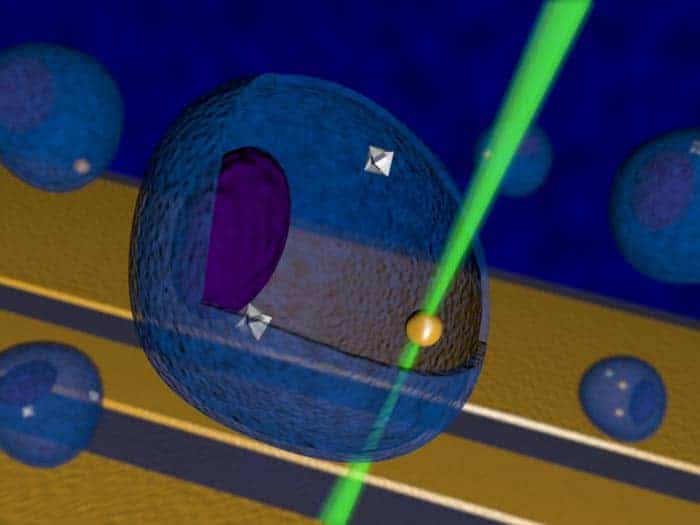New type of noise found lurking in nanoscale devices
12 Oct 2018
A new type of electronic noise has been discovered by a team of physicists and chemists in Israel and Canada. Dubbed “delta-T noise”, the effect occurs when two sides of a tiny electrical junction are at held at different temperatures. As electronic devices become ever smaller, the researchers predict that delta-T noise could become increasingly problematic. The good news is that delta-T noise could be used to measure temperature differences in nanometre-scale objects – something that is extremely difficult to do.
When physicists think of noise it is not the clamour from a pop concert or a busy road, but rather electrical signals that are an intrinsic property of a device. For almost 100 years, physicists have known about two sorts of fundamental noise in electrical signals. Thermal noise is proportional to temperature and is a result of the random motion of electrons. This creates fluctuations in electrical current even if there is no applied voltage and the average current is zero. Thermal noise can have negative consequences in a circuit, but it can also be used to measure the absolute temperature of an object. The second type of noise is called shot noise and does require an applied voltage. Shot noise occurs at very low currents when the discrete nature of electrons causes fluctuations in current.
The idea of delta-T noise first came to Oren Tal of the Weizmann Institute of Science when he was studying the effect of thermal noise on a molecular junction. The junction comprised a single molecule between two electrodes, which were at different temperatures. He realized that in addition to thermal noise, there may also be a noise associated with the temperature difference.
Uncorrelated motion
In an electrode near absolute zero, Tal reasoned, almost all the electrons are in the lowest possible energy level. Therefore, almost all the states up to a particular energy (the Fermi energy) are filled, whereas the higher energy levels are empty. In a warmer electrode, however, thermal excitation allows some electrons to jump to higher energy levels, leading to empty states below the Fermi energy and filled states above it.
In a junction between a warm and a cold electrode, therefore, electrons are transmitted in both directions. Above the Fermi energy, they travel from hot to cold; below the Fermi energy, they travel from cold to hot. The average currents may be equal and opposite and therefore add to zero. Each current, however, experiences shot noise and, being uncorrelated, the random fluctuations do not cancel each other.
Tal consulted theoreticians Dvira Segal at the University of Toronto and Abraham Nitzan at Tel Aviv University. They confirmed that this new noise term is described by the widely-used Landauer theory of electron transport, despite never having been properly investigated before in this theoretical framework.
Gifted experimentalist
Actually detecting the noise, however, was an extremely challenging task for Ofir Shein Lumbroso, Tal’s PhD student. She was confronted with the conflicting goals of incorporating electrical heaters and thermometers into a nanoscale molecular junction, while simultaneously keeping it sufficiently well isolated from external electrical noise signals to allow measurement of the tiny intrinsic noise as a function of temperature difference. “It took several years to optimize our measurement setup to be able to measure the delta-T noise,” explains Tal, “but Ofir is a very gifted experimentalist and she eventually overcome these difficulties.”READ MORE

Designers of today’s integrated circuits concentrate solely on thermal noise when considering heat management. However, Tal explains as devices continue to shrink, inherently quantum noise becomes more and more important. “Thermal noise will always be the main noise at room temperature, but shot noise and delta-T noise should be taken into consideration,” he says. More positively, he says that delta-T noise could be useful for nanoscale measurements of temperature differences. This is an important application because just a few research groups worldwide can make nanoscale thermometers.
“I think [the research] is a very important contribution to the field of quantum transport,” says Wolfgang Belzig of University of Konstanz in Germany: “If you think about some experiments that have been conducted in the past few years that have found an unexpected increase in noise, it might now be important to check whether or not this is related to delta-T noise.”
The research is described in Nature.
12/10/2018 from physicsworld.com

Δεν υπάρχουν σχόλια:
Δημοσίευση σχολίου